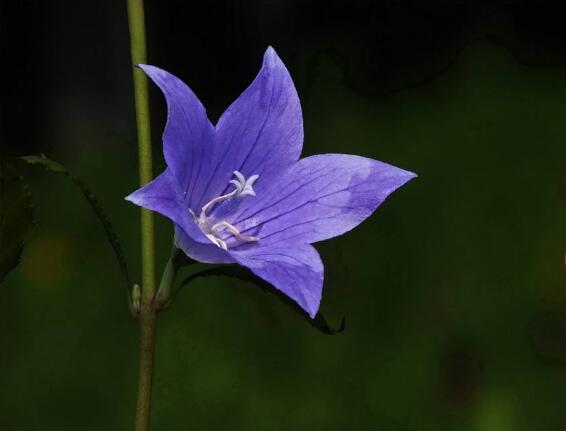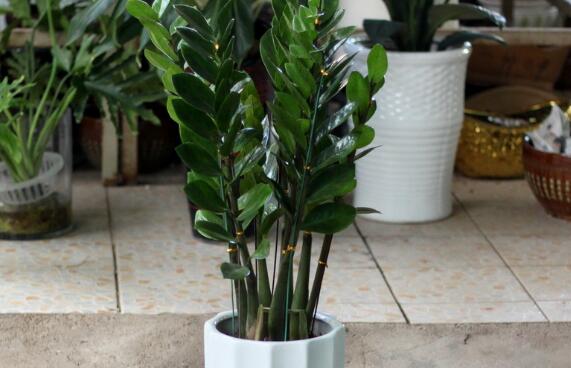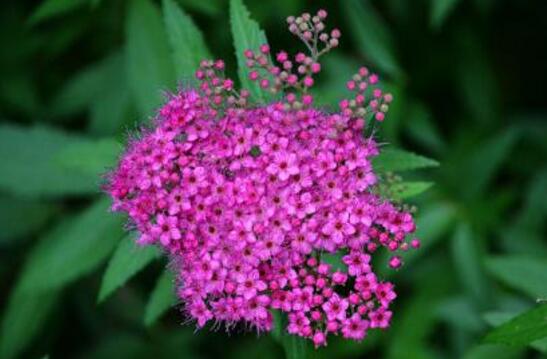How to deal with the long insects of Platycodon grandiflorum? The pest control of Platycodon grandiflorum/3 pests 2 diseases
Platycodon grandiflorum is a kind of plant with high medicinal value, and it also has a certain ornamental value, but if the ornamental plant is not properly maintained, there will still be diseases and insect pests, so what about the long insects of Platycodon grandiflorum? what do you need to do to control the diseases and insect pests of Platycodon grandiflorum? Next, the editor will take you to learn about it.
1. What to do when Platycodon grandiflorum grows / chemical control

II. Disease and pest control of Platycodon grandiflorum
1. Aphid pest
Aphids are a highly destructive pest, which is harmful to many plants, and Platycodon grandiflorum is no exception. it mainly harms the leaves and roots of Platycodon grandiflorum, which will gradually absorb the juice, and finally lead to the gradual loss of nutrients of Platycodon grandiflorum. Resulting in the phenomenon of death.
Control methods: the breeding speed of this pest is very fast, so it must be controlled as soon as possible. Generally, we choose to use 1000 times of 50% marathon emulsion to spray and control aphids.
two。 Small land tiger pest
In the prevention and control of diseases and insect pests of Platycodon grandiflorum, small land tiger is a relatively common pest. It looks a bit like silkworms and is black in color, which mainly harms the seedlings of Platycodon grandiflorum, so we must pay special attention to it at the initial stage of breeding.
Prevention and control methods: this kind of pest generally occurs when the environmental humidity is high, so we must pay attention to ventilation when breeding. To control this pest, we can choose 90% crystal trichlorfon 750g spray to kill it, and the effect is still very good.
3. Red spider pest
Red spider is a kind of omnivorous pest, which is harmful to many plants. Its volume is very small, the color is red, it mainly harms the leaves of Platycodon grandiflorum, will slowly suck the juice in the leaves, resulting in the leaves gradually turn yellow, and finally gradually shrink and fall off.
Prevention and control methods: for the prevention and control of this pest, we can use 50% fenitrothion 1000 murine 2000 times to spray, usually spray once every 7-12 days, and basically eliminate the pest after 1-2 times.
4. Blight disease
Rhizoctonia solanacearum is a disease caused by fungi, which mainly harms the seedlings of Platycodon grandiflorum. Some waterlogged brown spots will appear on the seedlings during the disease, and the color will gradually darken with the passage of time, resulting in the direct collapse and death of the seedlings.
Prevention and control methods: in the prevention and control of this disease, we can choose to use 75% pentachloronitrobenzene 200 times diluent to irrigate the seedlings, and the soil needs to be disinfected after treatment to avoid residual germs in the soil.
5. Spot blight disease
Spot blight disease mainly harms the leaves of Platycodon grandiflorum, some round white disease spots will appear on the leaves at the initial stage of the disease, and will gradually spread with the passage of time, resulting in the phenomenon of Platycodon grandiflorum withering.
Prevention and cure: this disease is best found in time in addition, if the time is prolonged, it is difficult to cure. To deal with this disease, we can use 65% Dysen zinc 400 times 500 times to spray the diseased plants, usually once every 15 days, and basically eliminate the disease after 2-3 times.
In fact, the cause of diseases and insect pests is mainly caused by the wrong maintenance process, so the method is very important when cultivating Platycodon grandiflorum. On this point, you can refer to the cultivation method of Platycodon grandiflorum, which is introduced in detail. For Platycodon grandiflorum pest control editor introduced here, I hope this article can bring you some help.
What to do when Platycodon grandiflorum grows? pest control of Platycodon grandiflorum / 2 insect pests and 3 diseases
Platycodon grandiflorum is a highly ornamental flower with rich colors, which can be seen in many gardens in our country. However, in beautiful flowers, if there are diseases and insect pests, there will also be yellowing and wilting phenomenon, about Platycodon grandiflorum long worm how to do, how to do the pest control of Platycodon grandiflorum? Next, the editor will take you to learn about it.
1. What to do when Platycodon grandiflorum grows / chemical control
2. Disease and pest control of Platycodon grandiflorum
1. Aphid pest
In the prevention and control of diseases and insect pests of Platycodon grandiflorum, aphids are the most common pest. This kind of pest is very small and difficult to find with the naked eye. Generally, it can only be judged by some symptoms. This pest mainly harms the leaves of Platycodon grandiflorum. It will suck the juice in the leaves, and there will be many withered spots in the victimized place at the initial stage. If it does not come out for a long time, it will lead to the phenomenon of plant death.
Control method: this pest is very harmful to Platycodon grandiflorum, so it is best to control it at the initial stage. Generally, we can use 2.5% deltamethrin emulsion 3000 times to spray the pest.
two。 Leaf miner pest
The high incidence period of this pest is from April to May every year, so special attention should be paid at this time. This pest mainly harms the petiole and leaves of Platycodon grandiflorum. It will gradually decompose the green leaves in the leaves, causing the leaves to turn yellow and wither.
Control methods: the reproductive ability of this pest is very strong, so it must be controlled as soon as possible when it is found. We can use 50% dichlorvos EC 800 times to spray the pest, usually 2-3 times in a row can kill this pest.
3. Grey spot disease
Grey leaf spot is a kind of disease that does great harm to plants. Many round brown spots will appear on the leaves of Platycodon grandiflorum during the disease, and will gradually expand with the passage of time, resulting in plant death.
Control method: the high incidence period of this disease is from July to August every year, when it is found that it must be controlled in time. We can use 2.5% deltamethrin EC to spray the plant, which is usually sprayed once every 7-10 days, and can be basically cured after 2-3 times.
4. Stem blight disease
Stem blight disease mainly occurs in the environment where the humidity is too high, so the environment must be ventilated when breeding. This disease mainly harms the stem of Platycodon grandiflorum. When this disease occurs, some oval disease spots will appear on the stem, which will gradually spread to the whole plant with the passage of the event, and finally lead to plant decay and death.
Prevention and control methods: when the emergence of this disease must be in the initial stage of prevention and control, our country for a long time may not be able to cure it. In the initial stage, we can use 38% azoxystrobin 800 times solution for spray control.
5. Root rot disease
Root rot is a disease caused by fungi. Like its name, this disease mainly harms the roots of Platycodon grandiflorum, causing it to rot gradually. The high incidence period of this disease is about March to April every year, so special attention must be paid at this time.
Control method: to prevent and cure the root rot, we can use 50% Baicaoqing wettable powder 500-800 times to irrigate the root of Platycodon grandiflorum, usually once every 3-5 days, and the disease can be basically eliminated after 1-2 times.
- Prev

How to deal with the growing insects of the money tree, the prevention and control of diseases and insect pests / 4 diseases and 1 insect
As an excellent foliage plant, money tree not only has a beautiful shape, its unique and beautiful meaning, deeply loved by the majority of flower friends. However, because it is not maintained according to the cultivation method of the tree, the tree will grow insects or get sick, which will seriously affect the ornamental value of the plant.
- Next

What to do when Violet grows worms? pest control of Violet / including detailed measures
Although the flowers of violets are beautiful, they can grow healthily and blossom on the premise of enjoying the beauty. If diseases and insect pests are caused by improper cultivation of violets, it will undoubtedly bring great harm to violets.
Related
- Fuxing push coffee new agricultural production and marketing class: lack of small-scale processing plants
- Jujube rice field leisure farm deep ploughing Yilan for five years to create a space for organic food and play
- Nongyu Farm-A trial of organic papaya for brave women with advanced technology
- Four points for attention in the prevention and control of diseases and insect pests of edible fungi
- How to add nutrient solution to Edible Fungi
- Is there any good way to control edible fungus mites?
- Open Inoculation Technology of Edible Fungi
- Is there any clever way to use fertilizer for edible fungus in winter?
- What agents are used to kill the pathogens of edible fungi in the mushroom shed?
- Rapid drying of Edible Fungi

